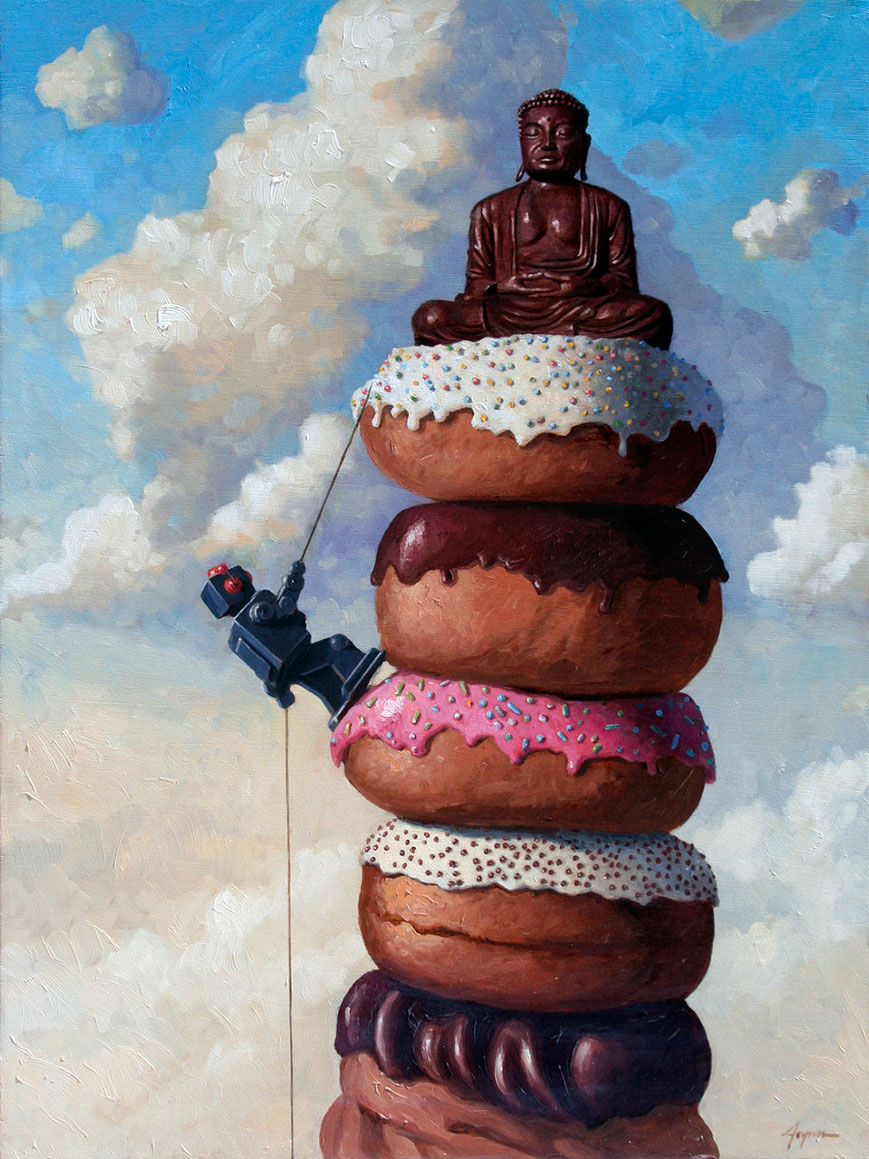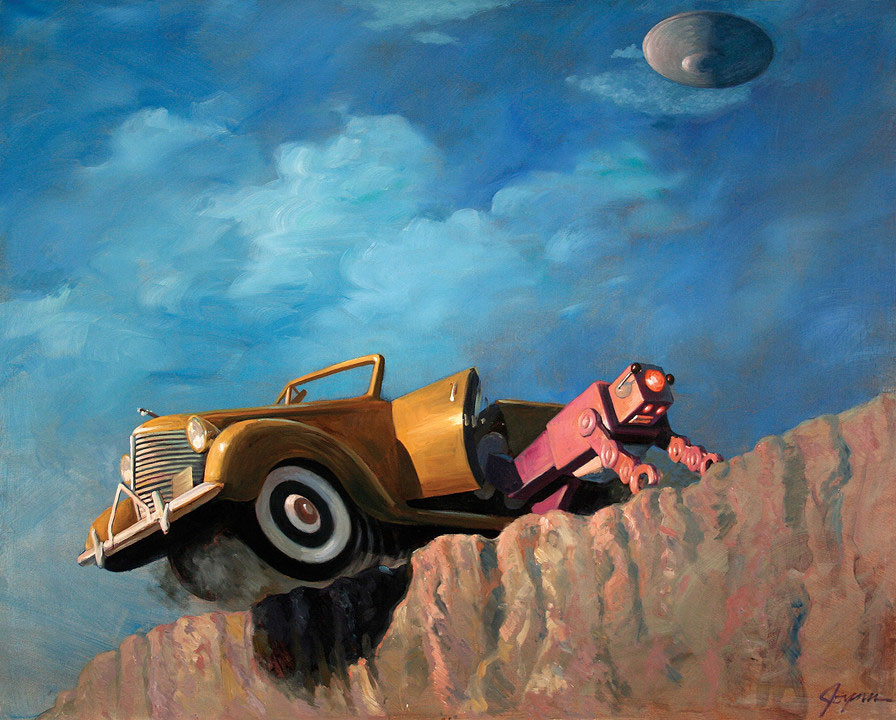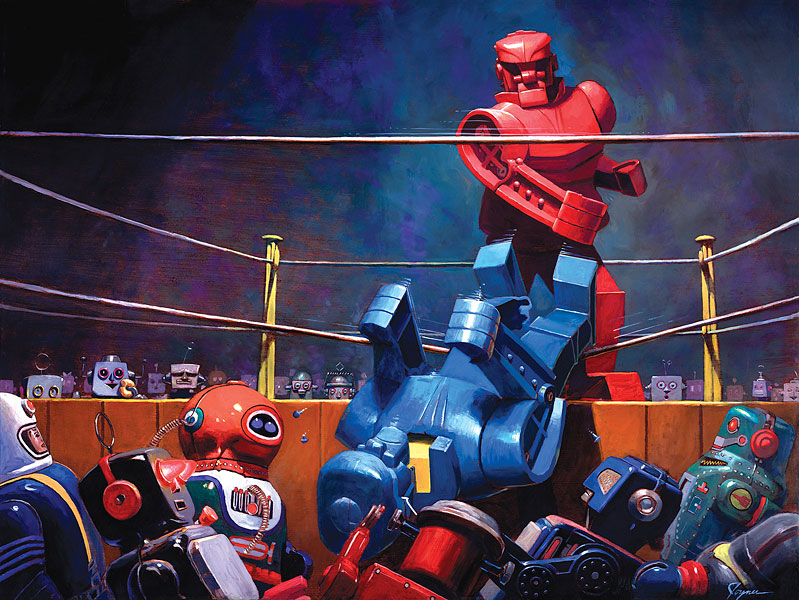Let's face it, I like the artists or the people who create sophisticated complex images. And I probably like conceptual art, like most of those who profess it - I myself came from conceptual art - but this is not my element. In the same sense as I like Oolong, but more often I drink black tea with milk and sugar. So let me start with Eric Joyner.
 Eric Joyner, Along the mystical path. Just a Sunday day on the Planet of Donuts. You'll love donuts, frost, splashes and a balance of bright colors. Has the donut vase ever been drawn better?
Eric Joyner, Along the mystical path. Just a Sunday day on the Planet of Donuts. You'll love donuts, frost, splashes and a balance of bright colors. Has the donut vase ever been drawn better?Joyner is an artist from artists. You can enjoy his classic style on its own. When there are clouds in his paintings, they are valuable in their own right, with their mixture of colors and brushstrokes. His manner is similar to comics in new ways. Joyner was an illustrator, but then he decided to become an excellent artist. What to draw? He decided to draw what he loves. I think he was very honest in his choice: donuts and toys from the 50s, Japanese robots. Then he combined them in his manner, depicted the scale as heroic, and the atmosphere bright, and formed a new world.
 Eric Joyner, The Dark Racer. I modeled a bunch of donuts in my current image (Human Fly). I made them to improve my technique.
Eric Joyner, The Dark Racer. I modeled a bunch of donuts in my current image (Human Fly). I made them to improve my technique.Most of all, I love paintings in which only robots and donuts are in their own special universe. Sometimes there are people in them or links to such films as Apocalypse Now or Star Trek, but I am not interested in the plot or story. People can ask him to draw a robot Elvis or something like that. I would prefer he did not. I don’t really want to see his robots and donuts in my world or the nostalgic America of the 1950s, since I want to visit the planet of robots / donuts (it still means all these things).
 Eric Joyner, Sweet Buddha. Donuts, clouds, toy robots ... and Buddha.
Eric Joyner, Sweet Buddha. Donuts, clouds, toy robots ... and Buddha.In Joyner's work, I am attracted to his space modeling technique. His objects have form, shadow, reflection and texture. All that he draws in this style will have the appearance of real, even if things are clearly fake. He plays with the building blocks of visual reality to create his own world. This is something that artists are no longer taught, and this is the most enviable skill. This is what I'm working on now, while I put on my “Human Fly” in color. If I had Joyner's skill, the process would have gone much faster. Instead, I experiment a lot to find and implement the effect I want.
 The human fly. My drawing, and I struggle with color. I could have done with dull colors in it, and that would make life easier. But I want to balance more vivid color. I have many ways, including more trial and error.
The human fly. My drawing, and I struggle with color. I could have done with dull colors in it, and that would make life easier. But I want to balance more vivid color. I have many ways, including more trial and error.My drawing above is definitely still “in progress”. I have not yet decided on all the colors. Eyes do not work. Usually I do not work like this and have never studied as an illustrator, so I learn in the process. I'm going to finish it, it's just a question of how difficult it is for me to do it. I also plan to make it more picturesque as soon as I find the color. I will need to spend at least another 12 hours.
 Eric Joyner, Close Call. A sense of America 50s, but not too obvious.
Eric Joyner, Close Call. A sense of America 50s, but not too obvious.Notice how many different colors are on the rock in the picture above. This is not just a brown color. And all the colors on the car door, shade, lights, reflected color. This style is not easy. It is similar to the language you learn in practice.
 Eric Joyner, The Giant Slayer.
Eric Joyner, The Giant Slayer.Above - children playing with toys.
 Eric Joyner, Last hit. You may have seen it before.
Eric Joyner, Last hit. You may have seen it before.Robots on a poster on the back door in the room of Sheldon and Leonard in the television series The Big Bang Theory. It incorporates an element of childish play into adult reality.
My finished
Human Fly .

